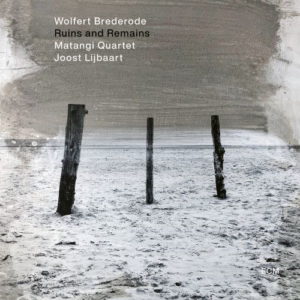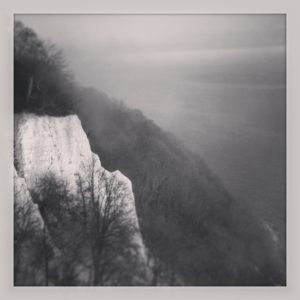Vom ersten bis zum letzten Ton ergreift mich Brian Enos neues Album, und das mit äusserst asketisch in Szene gesetzten Worten (rätselhaft, verwunderlich, romantisch, traurig, archaisch). Was für ein Werk, das das Ende der Zeiten in dunkel funkelndes, fraktales Licht rückt, verstörend und human, oder sollten wir sagen „post-human“?
Das Feuer ist hier in seinem Element, von Glühwürmchen („fireflies“) über Flammen bis hin zur von Menschenhand geschaffenen Hölle. Nicht zu vergessen all die Dinge, die im Feuer unseres eigenen Lebens verloren gegangen sind (soweit wir uns erinnern können). Manchmal, aus der Ferne, fügt sich alles (die Verluste zuerst, und die Hände, die noch zu halten sind) an seinen Platz.
Keine Ohrwürmer, keine Singalongs, keine märchenhafte Suche nach Parallelwelten, keine Hooks, keine zukünftigen Evergreens, oh, halt, auf ihre ganz eigene Art und Weise schlagen diese Songs, die man als moderne Lamentos bezeichnen könnte, eine Sammlung zukünftiger „Everblues“ zumindest, eine ganz besondere, andere Note und Ecke in Brian Enos Liedschaffen an.
Seine Stimme ist gut gealtert, sie greift nach dem tieferen Spektrum. Sie hat etwas von ihrer Verspieltheit verloren. Aber so ist es: Wenn sich einige Tore schließen, öffnen sich andere. Jeder Song hat eine andere Intonation und Stimmung: nachdenklich, beschwörend, am Rande des Abgrunds, beharrlich, skeptisch, verwundert.
„And how then could it be / That we appear at all? / In all this rock and fire / In all this gas and dust / Are we not each a flame? / All born to live in light / All born to give our light“.
Eine andere Persona in jedem Stück. Hymnische Linien, stockender Sprechgesang, vom Verharren zum Verschwinden, eine Variation zu Krapps letztem Band, und dann wieder grosses Kino, wenn das flüchtige Ich ein einziges Mal „my love“ anspricht? Der Keim der Hoffnung lässt sich vielleicht im fremdartigen Gemurmel des Schlusstracks erkennen, dem alle vertraute Sprache abhanden gekommen ist.
Das Album ist ätherisch, erschütternd, weltverloren, eindringlich (ohne falsche Erhabenheiten), und seltsam tröstlich (aller Düsternis zum Trotz). Die Klänge, die Eno und sein innerer Kreis erzeugen, als „jenseitig“ zu bezeichnen, wäre ein Klischee. Vielleicht liegt die Kühnheit des Ganzen in der Kollision von Intimität und Ferne, Sehnsucht und Trauer. „Foreverandevernomore“ ist (wie Leah Kardos mir schrieb), „ein fantastisches Album, das zu seinen besten Arbeiten überhaupt gehört. Zutiefst bewegend und faszinierend umgesetzt“.


